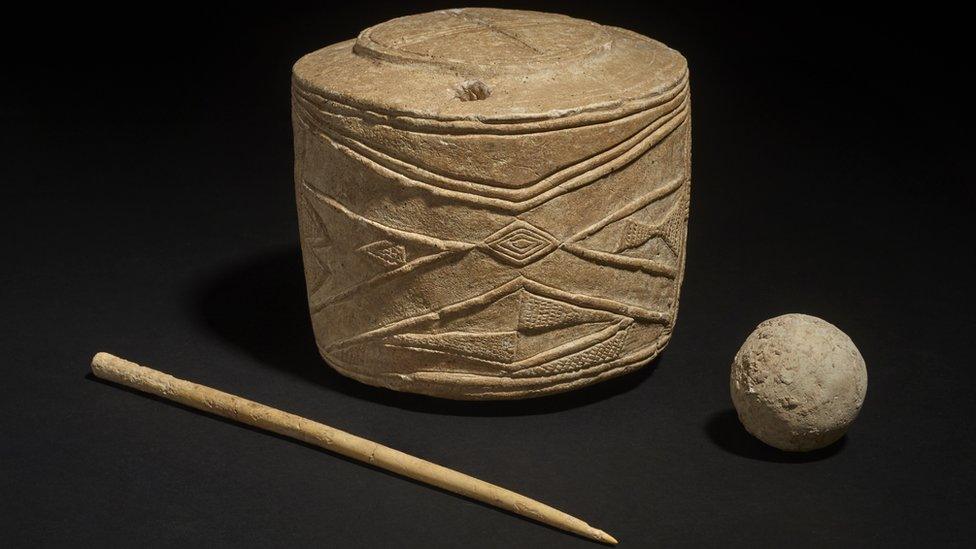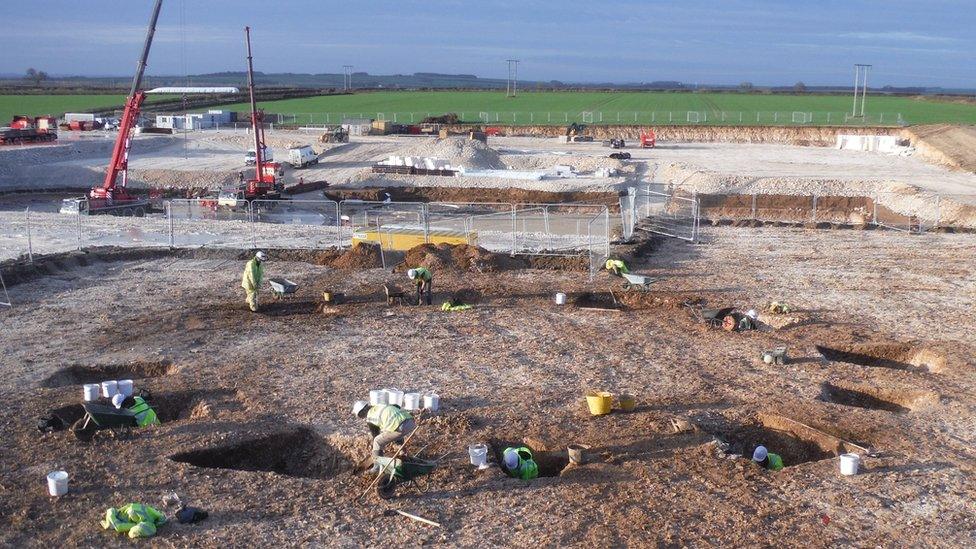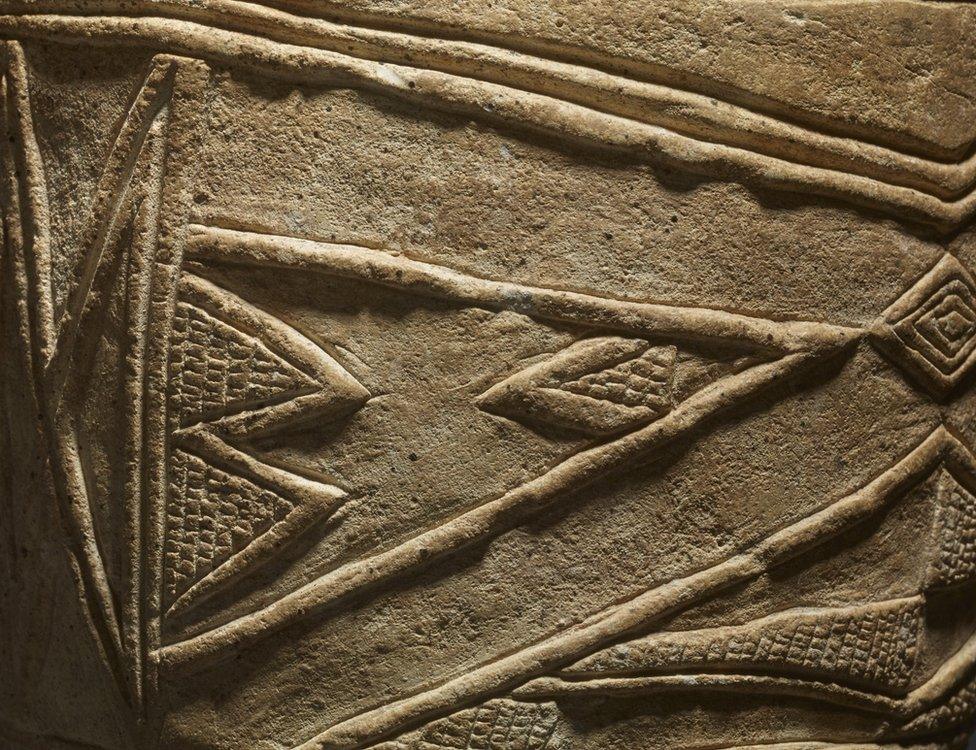Ancient chalk sculpture is 'most important prehistoric art'
- Published

The 5,000-year-old sculpture was found in an East Yorkshire grave, along with a bone pin and a chalk ball thought to be a child's toy
A 5,000-year-old chalk sculpture found in the grave of three children has been hailed as "the most important piece of prehistoric art" uncovered in Britain in a century.
The "Burton Agnes drum" was unearthed in East Yorkshire and will go on display at the British Museum.
The museum said it was "one of the most significant" ancient discoveries in the UK.
It is similar to three "Folkton drums" found in North Yorkshire in 1889.
British Museum curator Neil Wilkin said: "This is a truly remarkable discovery, and is the most important piece of prehistoric art to be found in Britain in the last 100 years.
"The Folkton drums have long remained a mystery to experts for well over a century, but this new example finally begins to give us some answers.
"To my mind, the Burton Agnes drum is even more intricately carved and reflects connections between communities in Yorkshire, Stonehenge, Orkney and Ireland. Analysis of its carvings will help to decipher the symbolism and beliefs of the era in which Stonehenge was constructed."
The barrel-shaped cylindrical sculpture is only the fourth of its kind known to have survived and still retains elaborate motifs purveying a British and Irish artistic style, which flourished at the time Stonehenge was built, curators said.
It was unearthed, along with the burial of three children, at a country estate - about 15 miles away from where the Folkton drums were discovered - in a routine excavation as part of a planning process in 2015 and has since been the subject of extensive research.

The discovery was made in 2015 at a country estate near Burton Agnes

The motifs are yet to be deciphered, but are thought to have either symbolic or religious meaning
The chalk drum, which is not believed to be a musical instrument, was discovered lying above the head of a child, which was holding the other two younger ones "in a moving scene", and may have been intended as "talismans" to protect the children, archaeologists said.
Three holes in the drum are thought to mark the presence of the three bodies in the grave. The two youngest were touching or holding hands.
A chalk ball and polished bone pin were also found next to the drum and underneath one of the children's heads. Similar items from the same period have been uncovered elsewhere in Yorkshire.
A radiocarbon date from one child's bones has identified the burial to date between 3005BC and 2890BC.
Scientists believe the Folkton drums could also be of similar age.

The drum was found next to three children buried close together "in a moving scene", archaeologists said
Mr Wilkin said the drum discovery was "highly moving" and would be seen by the public for the first time in an exhibition opening on 17 February.
"The emotions the new drum expresses are powerful and timeless, they transcend the time of Stonehenge and reflect a moment of tragedy and despair that remains undimmed after 5,000 years," he said.

Follow BBC East Yorkshire and Lincolnshire on Facebook, external, Twitter, external, and Instagram, external. Send your story ideas to yorkslincs.news@bbc.co.uk, external.